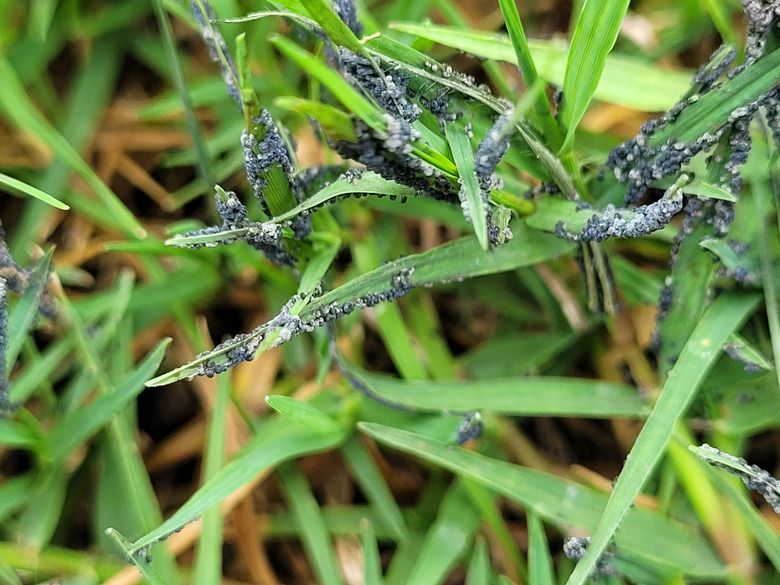Why Does My Lawn Have Black Spots?
We may receive a commission on purchases made from links.
Black spots on grass not only look unattractive, serving only as an eyesore, but they also sabotage the health and vigor of the lawn and weaken its structure. Most are caused by fungal infestations.
These types of spots or patches can signal serious health problems. Improper cultural practices further weaken the structure of the grass, making it susceptible to the fungi that cause disease. Immediate attention can control the spread of the disease and help the grass to regain its natural color.
Causes of Black Spots
Causes of Black Spots
Black spots on lawn grass occur due to fungal diseases such as leaf spot, pythium blight, leaf smut, and slime mold. Leaf spot affects many flowering and foliage plants, trees, shrubs, and vegetables. Leaf smut is more common on bluegrass, fine fescue, and perennial ryegrass, while slime mold occurs on warm-season grasses and rarely affects cool-season varieties.
Symptoms of Leaf Spot
Symptoms of Leaf Spot
Symptoms of leaf spot include reddish-black to purplish-black spots on grass created by colonies of tiny mushrooms. Although individual mushrooms are not clearly visible to the naked eye, the colonies they form when joined together resemble a mold-like mass on grass.
More common on newly seeded lawns than established ones, pythium blight forms cobweb-like growths of fungi usually apparent during humid, wet mornings or evenings. Left untreated, patches that start small can grow over 1 foot in width.
Initial symptoms of leaf smut appear as yellow patches on grass that stunt growth. Left untreated, black streaks of fungal spores appear on the yellow patches.
Slime mold fungi cause 5- to 8-inch-wide patches or large spots of black fruiting bodies on the grass.
Treatment for Leaf Spot
Treatment for Leaf Spot
Scattered leaf spots on grass do not harm the lawn. Cultural management of the disease includes mowing the grass slightly higher than the regular required height to reduce stress, avoiding excessive spring fertilization, and watering deeply but infrequently.
If proper cultural practices do not reduce the severity of the disease, apply a registered fungicide and repeat its application every five to 10 days until symptoms disappear. To treat pythium blight, spray a registered fungicide over infected grass. Manage leaf smut with a registered systemic fungicide, which is absorbed into the plant tissues. Douse parts of the lawn infested with slime mold with a fast jet of water from a hose to remove fruiting bodies.
Preventing Black Spots
Preventing Black Spots
Maintain a healthy, stress-free lawn so it naturally fights diseases and reduces the occurrence of black spots. Irrigate the lawn infrequently but deeply, preferably in the morning so any droplets on blades are dry by evening. Follow a good fertilizer regimen to boost the grass's immune system so it combats disease-spreading bodies.
